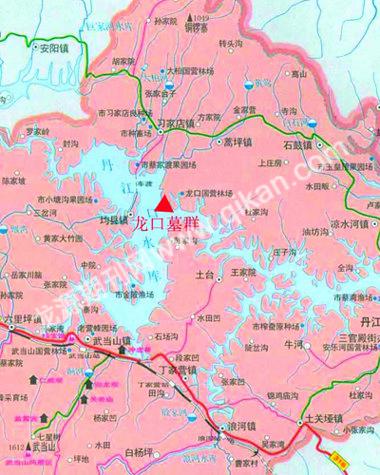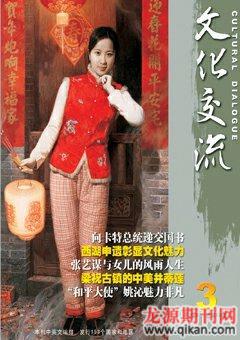In?。眩酰澹螅簟。铮妗。簦瑁濉。粒睿悖椋澹睿簟。茫瑁酢。茫椋觯椋欤椋幔簦椋铮?/h1>
2009-06-30 09:39MeiZiman
文化交流 2009年3期
Mei Ziman

On April 2nd 2008, a team of archaeologists from Ningbo signed a contract to explore a designated part of Danjiangkou area where a south-to-north water diversion project was about to start on a large scale. The team was contracted to explore if there were ancient cultural relics underground in the designated area, for it would soon go underwater.
It was no coincidence that the Ningbo team was chosen. Experts in Ningbo have hands-on experiences thanks to archaeological excavation and conservation work since the early 1950s. A large amount of ancient relics have been salvaged and saved because of archaeological studies and unearthing in downtown Ningbo and its suburbs in recent years in the process of urbanization and industrialization of the port city.
In 2006, the Ningbo Archaeological Research Institute was accredited as an archaeological team qualified for taking part in national field study projects, making it the only one with such national qualification among the 11 archaeological institutes in the province.
The team of archaeologists left for Danjiangkou on September 2, 2008. It was the first time that an archaeological team in Zhejiang got involved in a national project outside Zhejiang Province.
Initial Failure
The teams assigned area measures 15 square kilometers. And the team now stays in the village of Longkou. Less than 100 meters away is the gigantic Danjiangkou Reservoir, the point of departure of the water diversion project.
Upon its arrival at the village the team ran into difficulties. The village with rural beauty is far from anywhere and provides no modern facilities for the team. Li Yongning, a veteran archaeologist who had visited the village for preliminary preparations for the team logistics and work, recalled that the first sight of the desolate village depressed and shocked him so much that he did not speak for eighteen days after he returned to Ningbo. He had never seen such a desolate place for archaeological field studies and he feared that the team might draw blank despite all the hardships and endeavors. He had a reason to worry, for several teams had ended up empty hands in the project which started in 2006.

Before the waters of the Danjiangkou reservoir submerged the area in the 1950s, the village was roughly where a county capital stood. The team was assigned to look around within the fifteen square kilometers for clues. In the first few days, the team knocked on every door in the village for information. For twenty days, the prospect of finding anything valuable did look extremely bleak. Then some clues materialized and archaeologists explored some sites in the area where woods flourished due to an afforestation project that had started with the reservoir project in the 1950s. At first nothing came up.
Rewarding Moments
Before long, the team stumbled into something very rewarding. The archaeologists from Ningbo discovered so many ancient tombs that a team from Chengdu and a team from Heilongjiang were invited to share the excavation. Today, Longkou serves as the headquarters for three archaeological teams. Li Yongning said that the leaders of the two other teams were his former classmates in college.
The Ningbo team encountered another big challenge after an excavation plan was formulated. Old-fashioned villagers were unwilling to take part in tomb digging and moreover, they did not have time for excavation because it was the season for harvesting oranges. The team even thought of hiring helpers from neighboring provinces. But then Li Yongning decided that the most economic and best efficient way was to hire locals. He went to see villagers and lobbied hard. Villagers finally agreed to help.
Archaeological Finds
The excavation site is about 400 meters from the house where the Ningbo team stays, but the archaeologists need to walk about 15 minutes along a path through the orange orchards. Situated on a slope near the reservoir, the 2,700-m2 site contains a tidy array of pits, some very deep. Altogether there are 43 tombs, their years dating from the Warring States through the Han, Song and Qing dynasties up to the early 20th century. 150-plus artifacts unearthed include things made of bronze, lead, iron, porcelain and stone. In particular, the potteries are viewed as important for further research on the ancient civilization in the west Hubei Province, where the ancient Chu kingdom once ruled and prospered. The five Han-Dynasty tombs provide some missing parts for the whole picture of the ancient burial practice in this area and enhance the academic value of the area in archaeological studies.
The work by the Ningbo team has been hailed by peer archaeologists and archaeological authorities for excellent quality of excavation, cataloging and archiving, and site management.
At present, the archaeologists are sorting through the artifacts at the site. Some of the artifacts are now placed on a 40-m2 cement ground in front of the best house in the village and the more valuable artifacts are stored in a room behind a security door.
The initial evaluation indicates that although the potteries unearthed there feature the general characteristics of the Chu civilization in southern China, they also display special features bearing the influence from the central kingdom due to the geographic position of Danjiangkou and the convergence of different regional cultures. The research also indicates that the tombs were initially built according to a burial system used in the Zhou Dynasty as illustrated in historical records. Judging from the funerary objects and coffins unearthed, most of the dead buried there were nobles in the lowest order of aristocrats.□
Mei Ziman

On April 2nd 2008, a team of archaeologists from Ningbo signed a contract to explore a designated part of Danjiangkou area where a south-to-north water diversion project was about to start on a large scale. The team was contracted to explore if there were ancient cultural relics underground in the designated area, for it would soon go underwater.
It was no coincidence that the Ningbo team was chosen. Experts in Ningbo have hands-on experiences thanks to archaeological excavation and conservation work since the early 1950s. A large amount of ancient relics have been salvaged and saved because of archaeological studies and unearthing in downtown Ningbo and its suburbs in recent years in the process of urbanization and industrialization of the port city.
In 2006, the Ningbo Archaeological Research Institute was accredited as an archaeological team qualified for taking part in national field study projects, making it the only one with such national qualification among the 11 archaeological institutes in the province.
The team of archaeologists left for Danjiangkou on September 2, 2008. It was the first time that an archaeological team in Zhejiang got involved in a national project outside Zhejiang Province.
Initial Failure
The teams assigned area measures 15 square kilometers. And the team now stays in the village of Longkou. Less than 100 meters away is the gigantic Danjiangkou Reservoir, the point of departure of the water diversion project.
Upon its arrival at the village the team ran into difficulties. The village with rural beauty is far from anywhere and provides no modern facilities for the team. Li Yongning, a veteran archaeologist who had visited the village for preliminary preparations for the team logistics and work, recalled that the first sight of the desolate village depressed and shocked him so much that he did not speak for eighteen days after he returned to Ningbo. He had never seen such a desolate place for archaeological field studies and he feared that the team might draw blank despite all the hardships and endeavors. He had a reason to worry, for several teams had ended up empty hands in the project which started in 2006.

Before the waters of the Danjiangkou reservoir submerged the area in the 1950s, the village was roughly where a county capital stood. The team was assigned to look around within the fifteen square kilometers for clues. In the first few days, the team knocked on every door in the village for information. For twenty days, the prospect of finding anything valuable did look extremely bleak. Then some clues materialized and archaeologists explored some sites in the area where woods flourished due to an afforestation project that had started with the reservoir project in the 1950s. At first nothing came up.
Rewarding Moments
Before long, the team stumbled into something very rewarding. The archaeologists from Ningbo discovered so many ancient tombs that a team from Chengdu and a team from Heilongjiang were invited to share the excavation. Today, Longkou serves as the headquarters for three archaeological teams. Li Yongning said that the leaders of the two other teams were his former classmates in college.
The Ningbo team encountered another big challenge after an excavation plan was formulated. Old-fashioned villagers were unwilling to take part in tomb digging and moreover, they did not have time for excavation because it was the season for harvesting oranges. The team even thought of hiring helpers from neighboring provinces. But then Li Yongning decided that the most economic and best efficient way was to hire locals. He went to see villagers and lobbied hard. Villagers finally agreed to help.
Archaeological Finds
The excavation site is about 400 meters from the house where the Ningbo team stays, but the archaeologists need to walk about 15 minutes along a path through the orange orchards. Situated on a slope near the reservoir, the 2,700-m2 site contains a tidy array of pits, some very deep. Altogether there are 43 tombs, their years dating from the Warring States through the Han, Song and Qing dynasties up to the early 20th century. 150-plus artifacts unearthed include things made of bronze, lead, iron, porcelain and stone. In particular, the potteries are viewed as important for further research on the ancient civilization in the west Hubei Province, where the ancient Chu kingdom once ruled and prospered. The five Han-Dynasty tombs provide some missing parts for the whole picture of the ancient burial practice in this area and enhance the academic value of the area in archaeological studies.
The work by the Ningbo team has been hailed by peer archaeologists and archaeological authorities for excellent quality of excavation, cataloging and archiving, and site management.
At present, the archaeologists are sorting through the artifacts at the site. Some of the artifacts are now placed on a 40-m2 cement ground in front of the best house in the village and the more valuable artifacts are stored in a room behind a security door.
The initial evaluation indicates that although the potteries unearthed there feature the general characteristics of the Chu civilization in southern China, they also display special features bearing the influence from the central kingdom due to the geographic position of Danjiangkou and the convergence of different regional cultures. The research also indicates that the tombs were initially built according to a burial system used in the Zhou Dynasty as illustrated in historical records. Judging from the funerary objects and coffins unearthed, most of the dead buried there were nobles in the lowest order of aristocrats.□

